
Labradoodles are one of the most popular dog breeds in the world. A cross between a Labrador Retriever and a Poodle, an owner can have the best of both worlds. Intelligent, playful, and loyal, the Labradoodle becomes an instant friend and splendid companion. One of the biggest questions, however, what if Labradoodle coat changes? When deciding which Labradoodle to make a member of the family, keep in mind that their coat might change over time.
Labradoodle coats experience changes with age, such as between puppyhood and adulthood, and well into their senior years. Not only is the texture affected, but so is the color. Sometimes, a Labradoodle’s coat will get darker or lighter, depending on their genetics. The guide below will provide all the information concerning a Labradoodle’s coat. Learning about their coat is as significant as the grooming process.
Before scrolling down this guide about Labradoodle coat changes, then these articles might help you: Silver Labradoodle Coat Guide and Red Labradoodle Coat Guide.
Labradoodle Coat Types
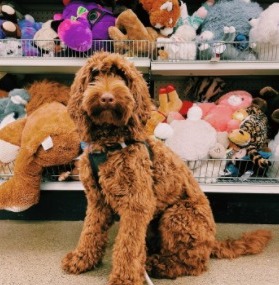
Types of Coats

1. Hair or Straight

2. Fleece

3. Wool or Curly
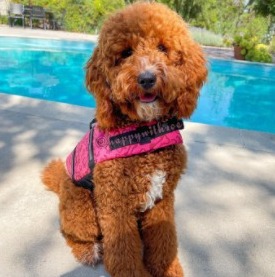
Related: Do Mini Labradoodles Shed a Lot?
Labradoodle Colors
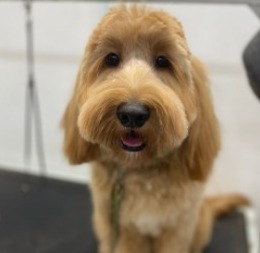
Some Labradoodle colors available are:
- Black
- Golden and Apricot
- Cream
- Chalk White
- Chocolate
- Parchment
- Red
- Parti, Abstract, and Phantom
Shedding Their Puppy Coat

The best way to get through the time of shedding is to brush your Labradoodle as much as possible, helping the fur come off and prevent matting. Once the process is complete, the puppy, closer to adulthood, will sport a coat of different colors and textures. Of course, the type of coat the puppy was born with won’t change to another type of coat–straight won’t suddenly become curly. There will be changes in the texture, so slightly curly might get curlier, and the color will change.
Labradoodle Coat Color Changes Over Time
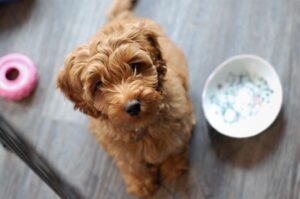
- Black: Labradoodles born with black hair should retain the black color most of their lives. There is a possibility during different life transitions that the black might change more to silver or blue color. A dog’s coat can start changing to silver undertones within the first couple of years of its life and can vary in hue. Blue, on the other hand, is noticeable at birth since their skin will hold a slight blue color which the coat shows off later in life.
- Golden and Apricot: The apricot coat color is prone to either darkening or lightening with age. The color itself will remain the same, but its intensity will either diminish or get more significant. For a Labradoodle with a golden color, it’s more likely the color will fade the older they are.
- Cream and White: Whether this breed is a cream or a white Labradoodle, they are likely to remain that way their entire life. These two colors, since they are already so pale, usually do not change. As they grow, your white or cream-colored Labradoodle will remain the same.
- Chocolate and Parchment: Chocolate Labradoodles are often mistaken for black when they’re born because the color is so deep. Over time, that darker hue will begin to fade and turn into varying shades of brown. A parchment-colored Labradoodle is one that appears chocolate or brown at birth, but that color also fades. With enough years, it will turn to a more milk chocolate color, or even develop a subtle lavender color that can appear smoky.
- Red: Red is a very rare color to see on a Labradoodle. Unfortunately, as beautiful as it appears, it fades over time. Most of the time it will fade to other shades of red, but there is no guarantee in the way it will look as the Labradoodle ages.
- Parti or Abstract: This isn’t a color, but rather a combination of colors. With Labradoodles who are considered Parti and have more than one color on their coat, these colors will change as they age. When the Labradoodle goes from a puppy to an adult, the biggest change will happen with the shedding that takes place at that time. Though the shades will change, partis are distinguishable at birth and will likely retain the same color even if the pattern changes.
Labradoodle Breeders: Best Mini Labradoodle Breeders in the United States.
Other Labradoodle Factors
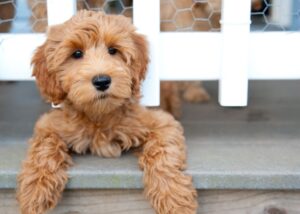
- Clipping: A Labradoodle is considered as having a true color only when it’s the same shade throughout the entire coat. Often, however, the shade changes throughout the places on the body and whether the color is near the skin or the tip. When a Labradoodle gets a cut, the coat can give an appearance of having a different color since the color at the tip has been clipped.
- Climate: Labradoodles who love to play outside and live in sunny climates are also up against the elements. Spending a significant time outside will cause the sun to lighten the coat overall.
Interested in a Labradoodle companion? Check out our recommendations: Best Labradoodle Breeders on the East Coast and Best Labradoodle Rescues For Adoption.
Conclusion For “Labradoodle Coat Changes”
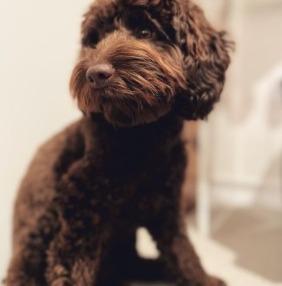
Even something as simple as getting the dog properly groomed may cause the fur to appear a slightly different color. Since Labradoodles go through these changes, choosing your newest companion when they’re a puppy should never be made based on the coat they’re born with. Instead, it’s best to look at previous litters to see what types of coats offspring had. Coat and color are important to many owners, but it’s also important to remember their loyalty and playfulness.
For more articles with mentions of the Labradoodle breed, check out:
- When Do Labradoodles Stop Growing?
- Mini Labradoodle vs. Mini Goldendoodle
- Blonde Labradoodle Coat Guide
To learn more about this topic, watch “Labradoodle Puppy Colors and Patterns” from Van Isle Doodles down below:

Dr. Sabrina Kong graduated from the Royal Veterinary College in England in 2016 and has been working at a small animal clinic in Northern California since then. She grew up in the Bay Area and got her bachelor’s degree from Cal Poly San Luis Obispo. She also became a Certified Canine Rehabilitation Practitioner through a program at the University of Tennessee.
When she isn’t in the clinic taking care of her four-legged patients, she enjoys traveling and trying new foods with her friends and her three-legged dog, Apollo. She adopted Apollo from her clinic when he was a puppy with numerous health issues. Dr. Kong truly cares about taking care of animals.